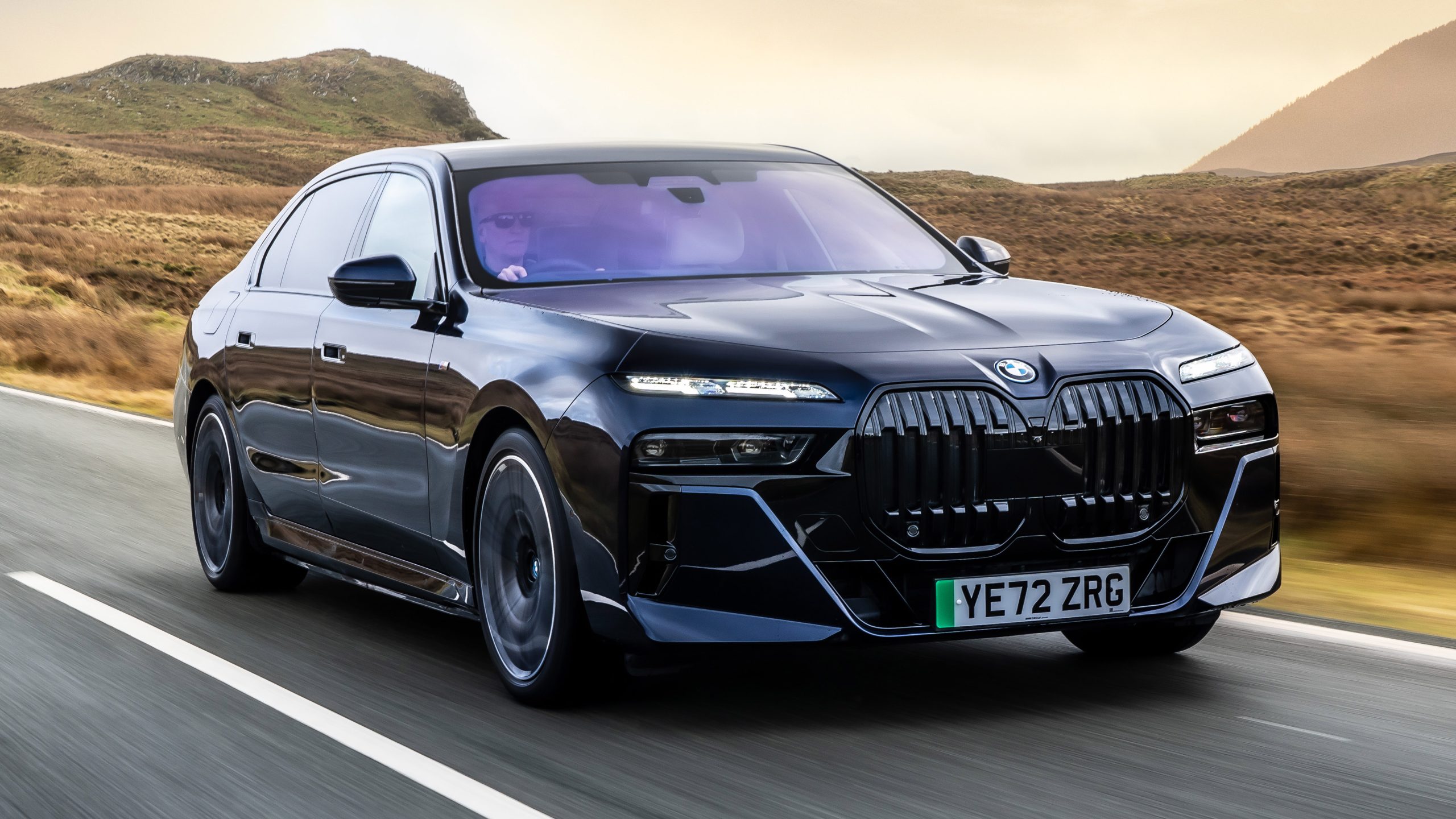Driving at night presents unique challenges that have plagued motorists since the invention of the automobile. Poor visibility, glare from oncoming headlights, and the difficulty of spotting pedestrians, cyclists, and wildlife in low-light conditions contribute to a disproportionate number of accidents occurring after dark.
According to the National Safety Council, the risk of fatal car crashes is three times higher at night than during the day, despite significantly less traffic on the roads.
Modern automotive technology has responded to these challenges with increasingly sophisticated night-vision systems and enhanced lighting technologies.
Today’s vehicles range dramatically in their low-light performance capabilities, from luxury models equipped with thermal imaging cameras and adaptive LED matrices to budget vehicles still relying on basic halogen headlights that barely illuminate the road ahead.
Night-vision technology in automobiles has evolved from simple headlight improvements to complex systems incorporating infrared cameras, thermal sensors, and heads-up displays.
Premium manufacturers like Mercedes-Benz, BMW, and Cadillac have pioneered these systems, integrating them seamlessly with other driver assistance technologies. These systems can detect pedestrians, animals, and obstacles hundreds of meters ahead, often before they become visible to the naked eye.
Conversely, many vehicles still struggle with fundamental lighting issues. Poor headlight design, inadequate beam patterns, and substandard materials can create dangerous blind spots and insufficient road illumination.
Some manufacturers prioritize cost-cutting over safety, resulting in vehicles that leave drivers virtually blind in challenging nighttime conditions. The disparity between the best and worst performers in night-vision capabilities reflects broader trends in automotive safety technology.
While luxury vehicles showcase cutting-edge innovations that could save countless lives, budget-conscious consumers often find themselves in vehicles with lighting systems that haven’t meaningfully improved in decades.
This technological divide raises important questions about automotive safety equity and the democratization of life-saving features across all vehicle segments.
Understanding these differences is crucial for consumers making informed purchasing decisions and for policymakers considering safety regulations that could standardize minimum night-vision performance across all vehicles.
5 Cars With Excellent Night-Vision Features
These technologically advanced vehicles incorporate sophisticated infrared cameras and thermal imaging systems that dramatically enhance driver awareness during nighttime and low-visibility conditions by detecting pedestrians, animals, and obstacles beyond traditional headlight range.
Their cutting-edge sensors create detailed heat signatures displayed on dashboard screens, providing early warning of potential hazards that would otherwise remain invisible until dangerously close.
The integration of predictive algorithms and real-time processing ensures immediate alerts when potential collision risks are identified, often highlighting detected objects with colored overlays or audible warnings.
From luxury sedans with military-grade thermal technology to premium SUVs with multi-spectrum detection capabilities, these vehicles transform nighttime driving into significantly safer experiences through enhanced situational awareness.
1. Mercedes-Benz S-Class
The Mercedes-Benz S-Class stands as the pinnacle of automotive night-vision technology, representing decades of German engineering excellence in low-light driving assistance.
The flagship sedan’s Night View Assist Plus system utilizes advanced thermal imaging cameras that detect heat signatures from people, animals, and objects up to 500 meters ahead, far exceeding the range of conventional headlights.
The system’s sophisticated thermal cameras are strategically positioned behind the front grille, providing an unobstructed view of the road ahead.
These cameras detect infrared radiation emitted by warm objects, creating detailed images that appear on the central display screen. The technology excels at identifying pedestrians, cyclists, and wildlife that might otherwise remain invisible to drivers until it’s too late to react safely.
What sets the S-Class apart is its integration of night-vision data with other safety systems. When the thermal cameras detect a potential hazard, the system doesn’t merely display a warning image.
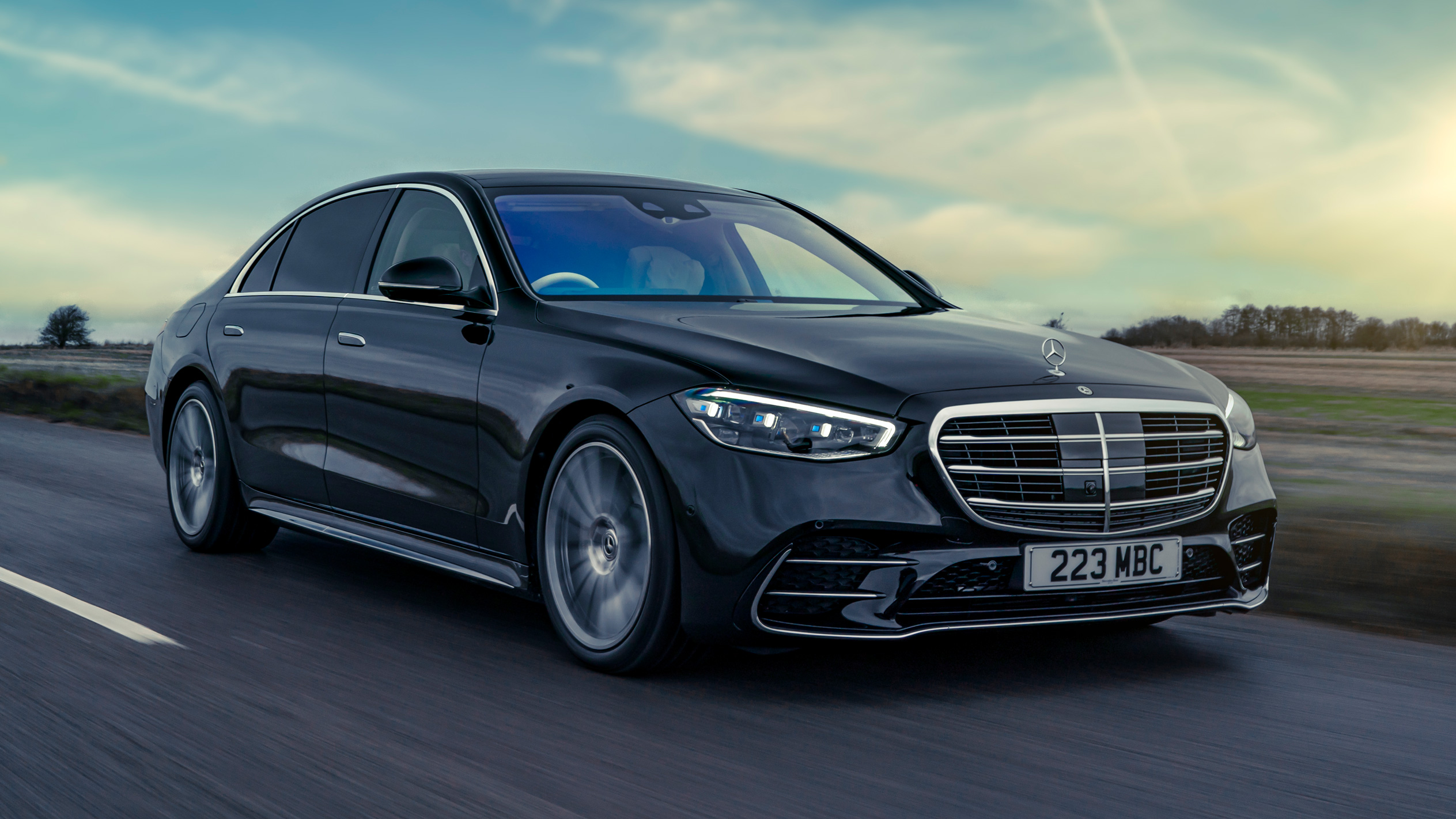
Instead, it actively highlights detected pedestrians or animals with bright yellow rectangles on the display, while simultaneously triggering audio alerts and even pre-tensioning the brakes for emergency stopping. This multi-layered approach to threat detection and response represents the cutting edge of preventive safety technology.
The vehicle’s Digital Light headlights complement the thermal system with unprecedented precision lighting. These LED matrix headlights contain over one million micro-mirrors per headlight, allowing for incredibly precise beam control.
The system can selectively dim portions of the light beam to avoid blinding oncoming drivers while maintaining maximum illumination of the road and roadside areas. This technology enables the headlights to project symbols and warnings directly onto the road surface, creating an augmented reality driving experience.
The S-Class also features Adaptive Highbeam Assist Plus, which automatically switches between high and low beams based on traffic conditions and oncoming vehicles.
The system’s cameras continuously monitor the road ahead, detecting other vehicles’ headlights and taillights to optimize illumination without causing glare for other drivers.
This seamless automation ensures drivers always have optimal lighting conditions without manual intervention. Beyond the primary night-vision systems, the S-Class incorporates ambient lighting that adapts to driving conditions.
The interior lighting system reduces brightness and shifts to warmer color temperatures during night driving, preserving the driver’s natural night vision while maintaining essential visibility of controls and displays. This attention to detail demonstrates Mercedes-Benz’s comprehensive approach to nighttime driving safety and comfort.
2. BMW 7 Series
The BMW 7 Series showcases the Bavarian manufacturer’s commitment to innovative night-vision technology through its comprehensive Night Vision system with Dynamic Light Spot.
This sophisticated setup combines thermal imaging with intelligent lighting to create one of the most effective low-light driving assistance packages available in the luxury sedan segment.
BMW’s thermal imaging system employs a far-infrared camera mounted discreetly in the front grille, capable of detecting heat signatures from living beings and warm objects at distances up to 300 meters.
The system’s advanced processing algorithms can distinguish between different types of heat sources, prioritizing humans and animals while filtering out less relevant thermal signatures from recently driven vehicles or warm pavement.
The Dynamic Light Spot feature represents BMW’s unique approach to night-vision assistance. When the thermal camera detects a pedestrian or cyclist in the vehicle’s path, the system doesn’t just provide a visual warning on the dashboard display.
Instead, it directs one of the LED headlights to illuminate the detected person with a focused beam of light, effectively “spotlighting” the potential hazard for both the driver and the pedestrian.
This innovative approach bridges the gap between detection and visibility, ensuring that threats identified by the thermal system become immediately visible to the human eye.
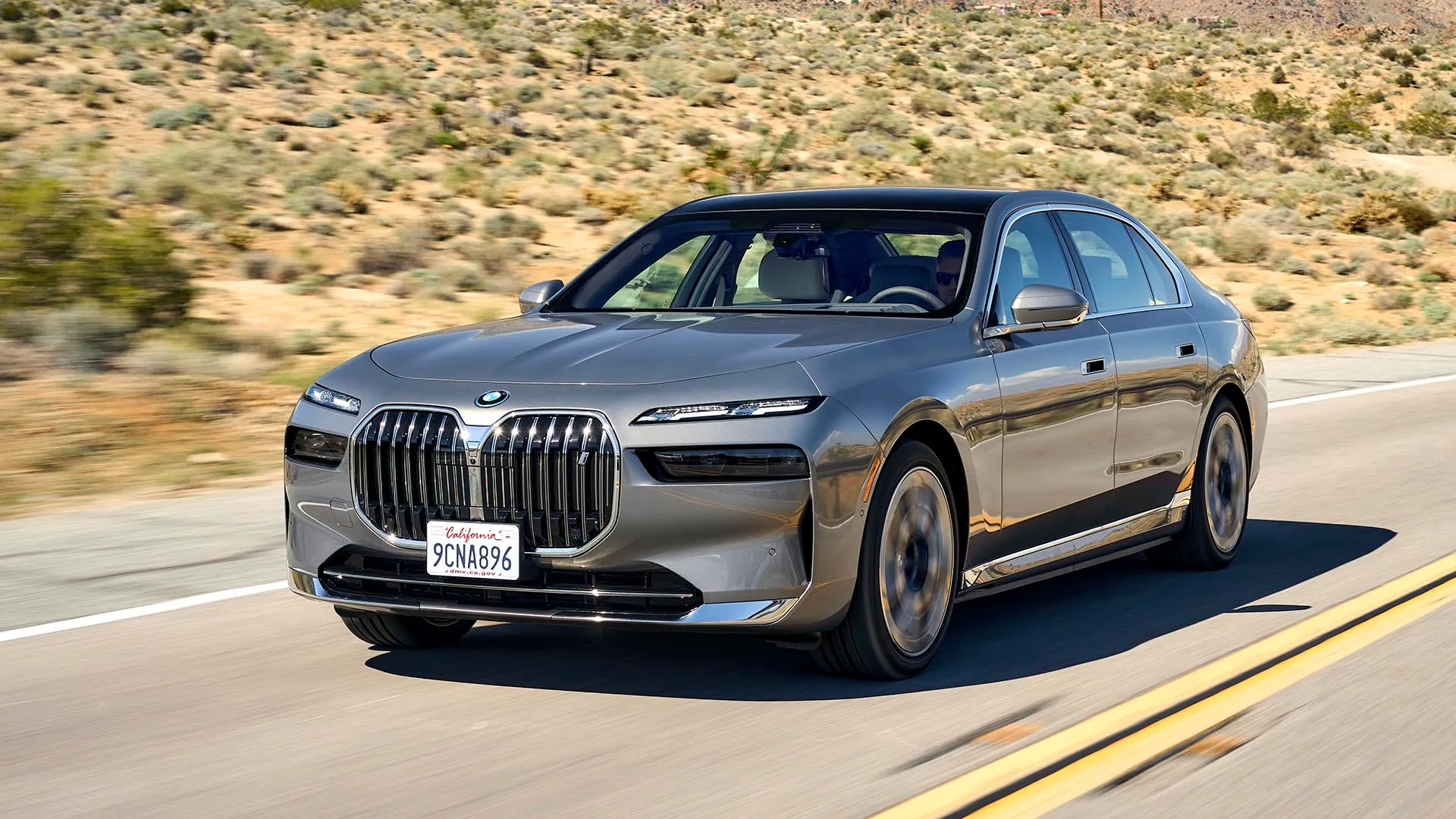
The 7 Series’ Adaptive LED Headlights work in concert with the night-vision system to provide comprehensive road illumination. These headlights feature anti-glare technology that automatically adjusts beam patterns based on oncoming traffic, road curvature, and driving speed.
The system can selectively mask portions of the light beam to prevent glaring oncoming drivers while maintaining full illumination of the road surface and surrounding areas.
BMW’s Laserlight technology, available on higher trim levels, extends the high-beam range to an impressive 600 meters, nearly doubling the illumination distance of conventional LED headlights.
These laser-powered high beams activate automatically at speeds above 70 kilometers per hour, providing exceptional visibility for highway night driving.
The system’s intelligent control ensures laser activation only when safe and appropriate, seamlessly transitioning between LED and laser illumination based on driving conditions.
The integration of night-vision data with BMW’s iDrive infotainment system creates an intuitive user experience. Thermal images appear on the central display screen with clear highlighting of detected pedestrians and animals.
The system provides both visual and audible warnings when potential hazards are identified, while maintaining a non-intrusive interface that doesn’t distract from the primary task of driving. This thoughtful integration exemplifies BMW’s user-centered approach to advanced safety technology implementation.
3. Cadillac Escalade
The Cadillac Escalade represents American luxury automotive engineering’s approach to night-vision technology, combining robust thermal imaging systems with the commanding driving position and presence that define this full-size luxury SUV.
Cadillac’s Night Vision system transforms the Escalade into a formidable nighttime driving machine, particularly suited for the diverse driving conditions encountered across North America.
The Escalade’s thermal imaging system utilizes a sophisticated infrared camera system that can detect heat signatures from pedestrians, animals, and vehicles at distances up to 500 meters ahead.
The system’s advanced image processing algorithms are specifically calibrated for North American driving conditions, with enhanced sensitivity for detecting wildlife commonly encountered on rural roads and highways.
This regional optimization makes the Escalade particularly effective for drivers who frequently travel through areas with significant wildlife populations. Cadillac’s implementation of night-vision technology emphasizes practical usability through its clear, high-resolution display integration.
The thermal images appear on the Escalade’s expansive curved OLED display, providing drivers with intuitive visual information that complements rather than overwhelms the driving experience.
The system automatically adjusts display brightness and contrast based on ambient lighting conditions, ensuring optimal visibility of thermal imagery without compromising night vision adaptation.
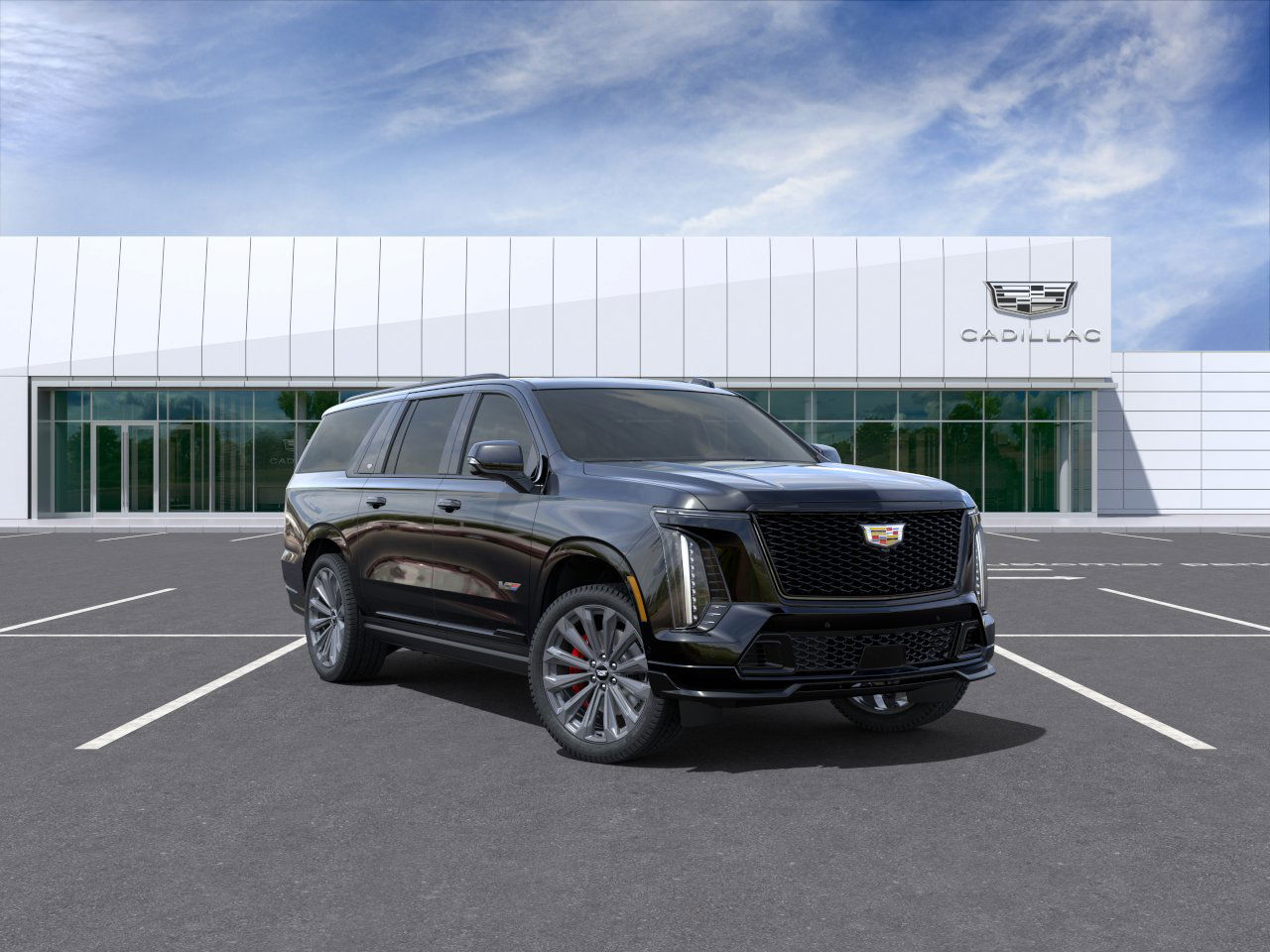
The Escalade’s LED matrix headlights work synergistically with the night-vision system to provide comprehensive illumination coverage. These adaptive headlights feature 84 individual LED elements per headlight, allowing for precise beam pattern control and automatic adjustment based on driving conditions, vehicle speed, and steering input.
The system can selectively dim portions of the light pattern to avoid glaring oncoming traffic while maintaining maximum illumination of areas where thermal cameras have detected potential hazards.
Super Cruise, Cadillac’s hands-free driving assistance system, incorporates night-vision data to enhance its situational awareness capabilities during low-light conditions.
This integration allows the Escalade to maintain safe following distances and lane positioning even when human vision is compromised by darkness or weather conditions.
The system’s infrared cameras supplement the visible-light cameras and radar sensors, providing redundant sensing capabilities that enhance system reliability and safety.
The Escalade’s raised seating position provides inherent advantages for night driving, offering drivers a commanding view of the road ahead that complements the electronic night-vision systems.
This physical advantage, combined with the vehicle’s advanced lighting and thermal imaging technologies, creates a uniquely capable platform for safe nighttime travel.
The SUV’s robust construction and advanced safety systems provide additional confidence for drivers to go through challenging low light conditions in diverse terrains and weather situations.
4. Audi A8
The Audi A8 exemplifies German precision engineering applied to night-vision technology, featuring one of the most sophisticated and user-friendly thermal imaging systems available in the luxury sedan segment.
Audi’s approach to night-vision assistance emphasizes seamless integration with the vehicle’s other driver assistance systems, creating a comprehensive safety ecosystem that excels in low-light conditions.
Audi’s thermal night-vision system employs a far-infrared camera strategically positioned in the front grille, capable of detecting heat signatures from people and animals at distances up to 300 meters.
The system’s advanced image processing capabilities can distinguish between different types of heat sources, prioritizing living beings while filtering out false positives from warm mechanical objects or environmental heat sources. This intelligent filtering ensures that drivers receive relevant warnings without being overwhelmed by unnecessary alerts.
The A8’s Matrix LED headlights represent a revolutionary approach to automotive illumination, featuring individual LED segments that can be controlled independently to create precise light patterns.
These headlights work in conjunction with the night-vision system to provide targeted illumination of detected hazards. When the thermal camera identifies a pedestrian or animal, the headlights can selectively brighten the area where the hazard is located while maintaining appropriate light levels for the rest of the road surface.
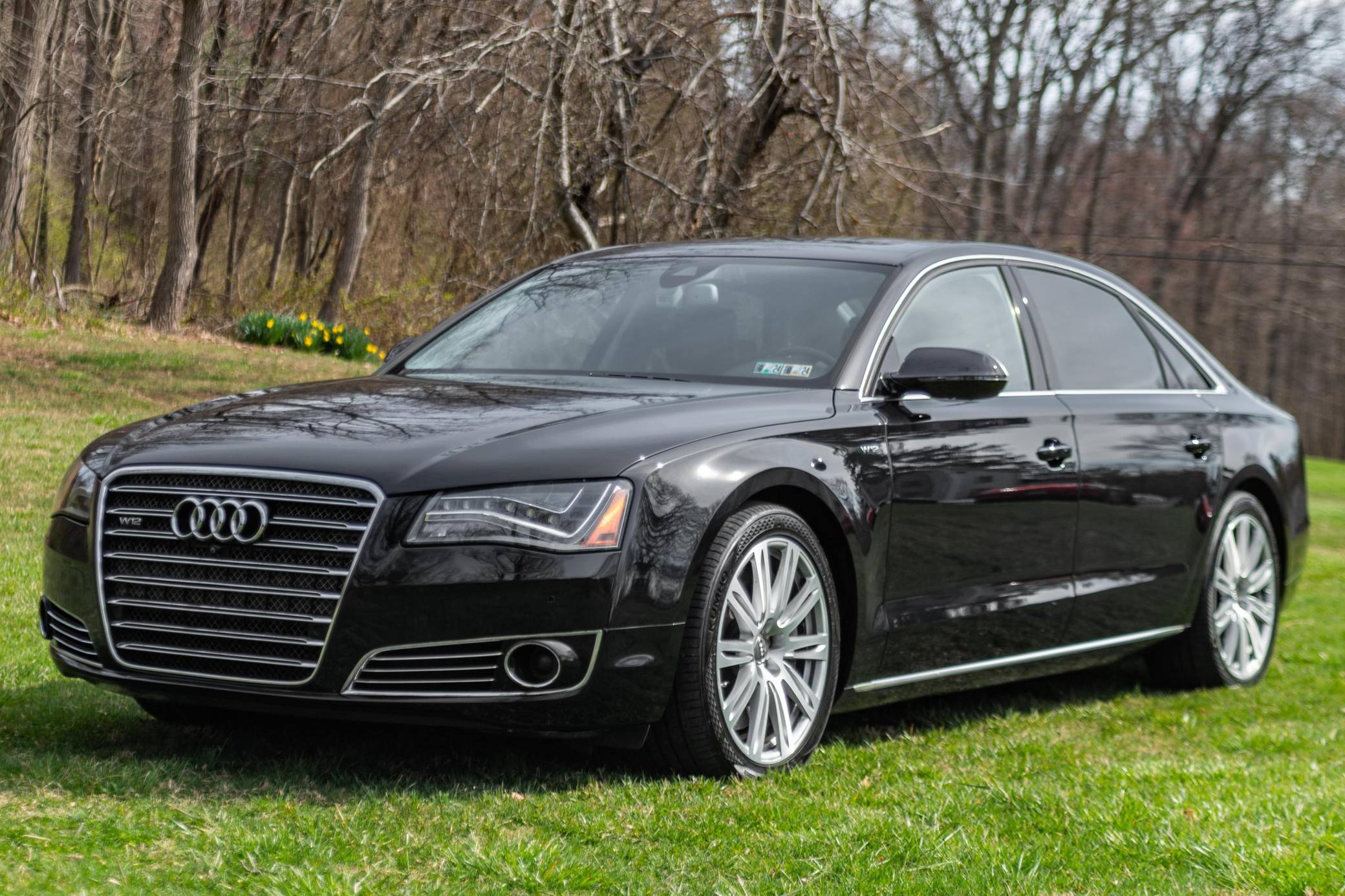
Audi’s Virtual Cockpit integration showcases the company’s commitment to intuitive user interface design in safety-critical systems. Night-vision imagery appears seamlessly within the digital instrument cluster, positioned to provide essential information without requiring drivers to divert their attention from the road ahead.
The system uses color coding and highlighting to draw attention to detected hazards, with warm-colored objects indicating people or animals and cooler colors representing vehicles or inanimate objects.
The A8’s predictive efficiency assistant incorporates night-vision data to optimize energy management and driving dynamics during low-light conditions.
This system can anticipate upcoming driving situations based on thermal imagery and GPS data, adjusting engine and transmission parameters to ensure optimal performance when quick acceleration or braking might be necessary. This predictive capability demonstrates Audi’s holistic approach to integrating night-vision technology with vehicle dynamics.
Audi’s commitment to continuous improvement is evident in the A8’s over the air update capability for night-vision systems. The thermal imaging algorithms and threat detection parameters can be refined and updated remotely, ensuring that the system’s performance continues to improve throughout the vehicle’s ownership lifecycle.
This approach reflects Audi’s understanding that night-vision technology is an evolving field that benefits from continuous refinement and optimization based on real-world driving data and experiences.
Also Read: 5 Cars With Easy Trunk Access vs 5 With High Lift-Over Heights
5. Volvo XC90
The Volvo XC90 represents the Swedish manufacturer’s legendary commitment to safety through its comprehensive approach to night-vision technology and low-light driving assistance.
While Volvo doesn’t employ traditional thermal imaging systems like some competitors, the XC90’s integrated safety technologies create an exceptionally effective nighttime driving environment that prioritizes accident prevention and occupant protection.
Volvo’s Pilot Assist system incorporates advanced camera and radar technologies that function effectively in low-light conditions, providing semi-autonomous driving capabilities that reduce driver fatigue during nighttime travel.
The system’s infrared-enhanced cameras can detect lane markings, road signs, and other vehicles even in challenging lighting conditions, maintaining safe following distances and lane positioning when human vision might be compromised.
The XC90’s Active High Beam system represents Volvo’s practical approach to nighttime illumination, automatically switching between high and low beams based on oncoming traffic and road conditions.
The system’s sophisticated sensors can detect vehicle headlights and taillights at significant distances, ensuring optimal road illumination without causing glare for other drivers. This automation eliminates the need for manual high beam control, allowing drivers to focus entirely on navigation and hazard detection.
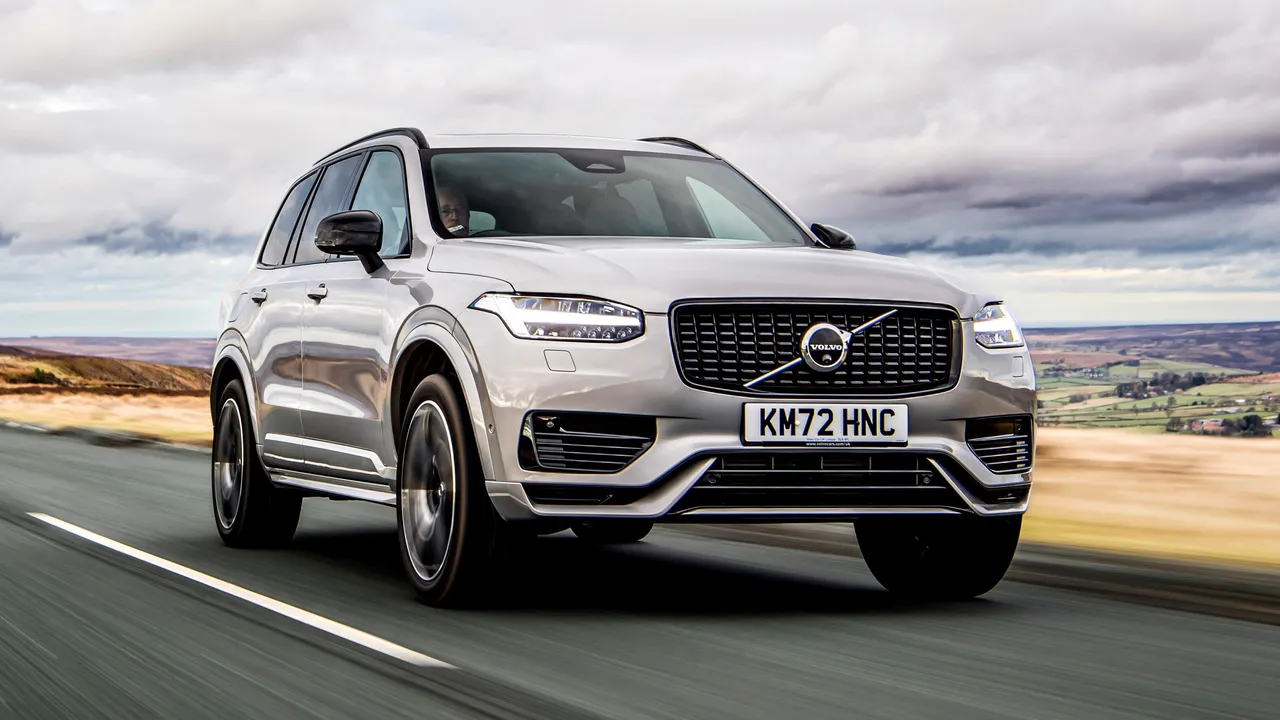
City Safety, Volvo’s collision avoidance system, demonstrates exceptional performance in low-light conditions through its integration of multiple sensor technologies.
The system can detect pedestrians, cyclists, and large animals even in darkness, automatically applying emergency braking when a collision appears imminent.
The system’s infrared sensors are particularly effective at detecting warm-blooded creatures that might be invisible to conventional cameras, providing crucial protection in rural and suburban environments where wildlife encounters are common.
Volvo’s Run-off Road Mitigation system incorporates night-vision capabilities to detect when the vehicle is approaching road edges or obstacles that might not be visible in low-light conditions.
The system can automatically apply steering corrections and braking intervention to prevent accidents caused by reduced visibility or driver inattention during nighttime driving. This technology is particularly valuable on unfamiliar roads or in weather conditions that further compromise visibility.
The XC90’s LED headlights with Active Bending Lights provide dynamic illumination that follows the vehicle’s steering input, ensuring optimal visibility around corners and curves during night driving.
The system’s integration with the vehicle’s navigation system allows for predictive lighting adjustments based on upcoming road geometry, preparing drivers for challenging sections before they become visible.
This proactive approach to illumination exemplifies Volvo’s comprehensive philosophy toward nighttime driving safety and accident prevention through thoughtful technology integration.
5 Cars With Poor Low-Light Performance
These inadequately equipped vehicles suffer from weak headlight output, poorly designed beam patterns, and insufficient auxiliary lighting that create dangerous blind spots and reduced visibility during crucial nighttime driving situations.
Their outdated halogen bulbs or poorly calibrated LED systems fail to illuminate road edges, signs, and potential hazards with sufficient brightness or proper distribution, forcing drivers to rely on inadequate illumination that compromises reaction times.
The combination of dim output, narrow beam spread, and excessive glare creates challenging conditions that strain driver vision and increase accident risk during evening commutes or rural travel.
From budget sedans with minimal lighting packages to older vehicles with degraded reflector housings, these cars leave drivers struggling with compromised visibility when clear sight lines become most critical.
1. Nissan Versa
The Nissan Versa, positioned as an entry-level sedan in Nissan’s lineup, unfortunately exemplifies the compromises that budget-conscious automotive manufacturing can impose on crucial safety features like nighttime visibility.
Despite being a modern vehicle, the Versa’s low-light performance remains significantly hampered by cost-cutting measures that prioritize affordability over advanced lighting technology and driver assistance systems.
The most significant limitation in the Versa’s nighttime performance stems from its basic halogen headlight system, which represents decades-old technology that has been largely superseded by LED and HID alternatives in most other vehicle segments.
These halogen headlights produce a warm, yellowish light that provides limited illumination range and poor color rendition compared to modern alternatives.
The effective illumination distance rarely exceeds 150 meters, even with high beams activated, leaving drivers with insufficient time to react to obstacles, pedestrians, or wildlife that might appear in the vehicle’s path.
The Versa’s headlight housing design compounds the illumination problems inherent in halogen technology. The reflector-based optical system creates an uneven light distribution pattern with significant dark spots and glare points that can impair driver vision rather than enhance it.
The sharp cutoff line between illuminated and dark areas creates a tunnel vision effect that reduces peripheral awareness, while the intense hotspots in the beam pattern can cause temporary blindness when light reflects off road signs, wet pavement, or other reflective surfaces.
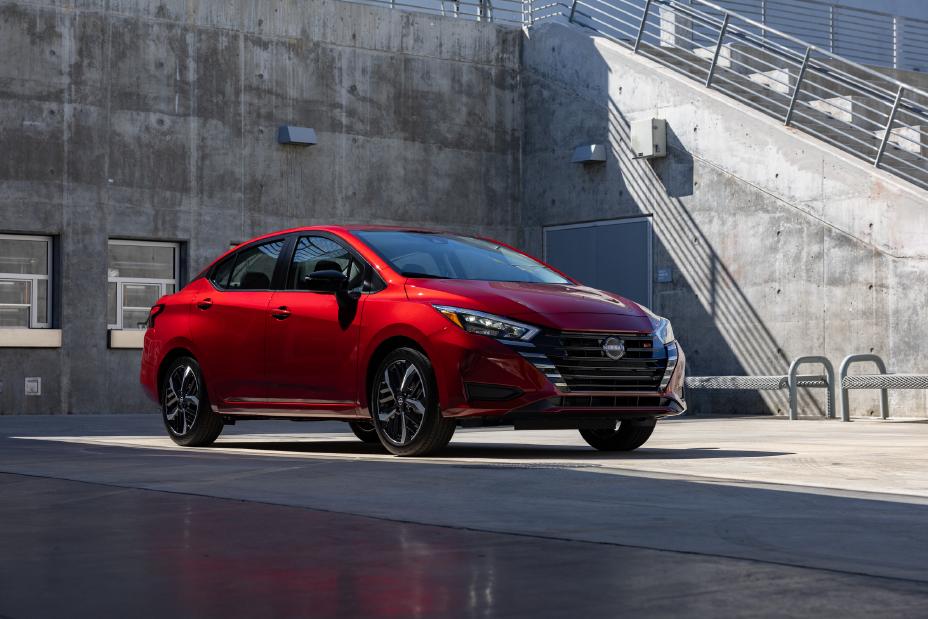
Interior lighting design in the Versa also contributes to poor nighttime driving performance. The dashboard and instrument cluster lighting lacks the sophisticated dimming controls found in more expensive vehicles, often remaining too bright during night driving and compromising the driver’s natural night vision adaptation.
The stark white LED interior lights used for map reading and other tasks can cause significant temporary vision impairment when activated during nighttime driving, requiring several minutes for the eyes to readjust to darkness.
The absence of any driver assistance systems that function effectively in low-light conditions leaves Versa drivers entirely dependent on their visual capabilities and the vehicle’s inadequate lighting system.
Unlike vehicles equipped with infrared sensors, thermal cameras, or even basic collision warning systems, the Versa provides no electronic assistance for detecting pedestrians, cyclists, or animals that might be present but invisible due to the poor headlight performance.
Maintenance issues further degrade the Versa’s already limited nighttime performance capabilities. Halogen bulbs have relatively short lifespans and tend to dim gradually over time, often requiring replacement before complete failure occurs.
The headlight housings are prone to oxidation and clouding, particularly in vehicles exposed to UV radiation and environmental contaminants, further reducing the already limited light output and creating dangerous visibility conditions that many drivers fail to recognize until nighttime driving becomes genuinely hazardous.
2. Mitsubishi Mirage
The Mitsubishi Mirage represents one of the most concerning examples of compromised nighttime driving safety in the modern automotive marketplace.
As Mitsubishi’s entry-level offering designed to compete primarily on price rather than features or safety, the Mirage’s low-light performance deficiencies create genuinely dangerous driving conditions that put occupants and other road users at significant risk.
The Mirage’s halogen headlight system produces some of the weakest illumination output found in any contemporary vehicle, with an effective range that barely extends beyond 100 meters even under optimal conditions.
The outdated reflector-based optical design creates a light pattern characterized by significant dark spots, uneven distribution, and poor side illumination that leaves large areas adjacent to the vehicle completely invisible to the driver.
This inadequate coverage is particularly problematic in urban environments where pedestrians and cyclists might approach the vehicle from angles not covered by the narrow beam pattern.
The physical construction of the Mirage’s headlight assemblies exacerbates the performance problems inherent in the basic halogen technology. The lightweight plastic housings lack the precision engineering found in more expensive vehicles, resulting in poor optical focus and light scatter that reduces effective illumination while increasing glare for oncoming drivers.
The mounting systems are prone to misalignment, particularly after minor impacts or normal wear, causing the already inadequate light beams to point in incorrect directions and further compromising road illumination.
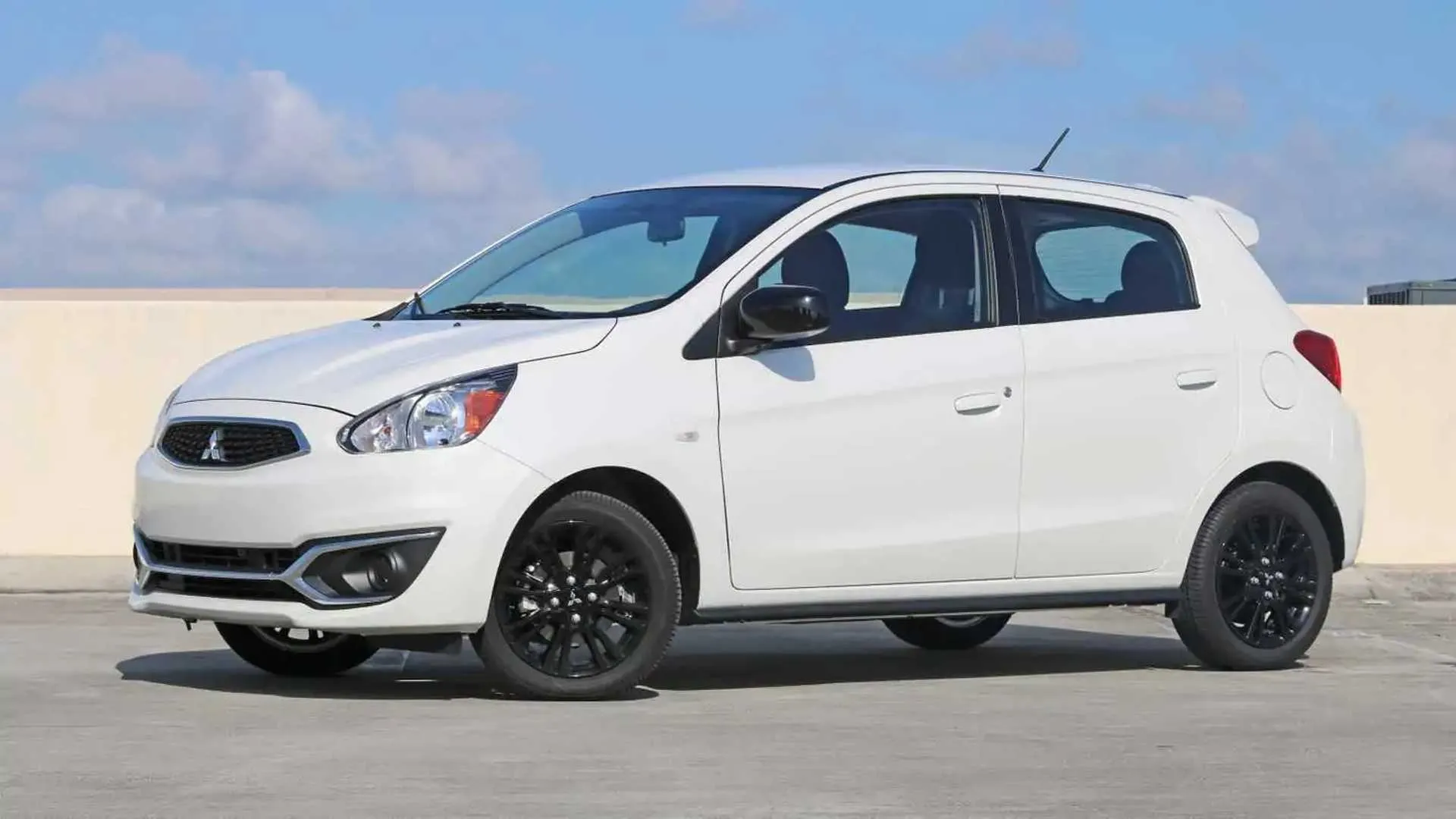
Interior ergonomics in the Mirage create additional challenges for nighttime driving safety. The dashboard layout places critical controls in locations that require drivers to divert attention from the road, while the instrument cluster lighting lacks the adjustability needed to maintain optimal visibility without compromising night vision adaptation.
The stark contrast between illuminated and dark areas within the cabin can cause eye strain and fatigue that impair driving performance during extended nighttime travel.
The complete absence of any electronic driver assistance systems in the Mirage leaves drivers without the safety net that has become standard in most other vehicle segments.
Without backup sensors, collision warning systems, or even basic automatic high beam control, Mirage drivers must rely entirely on their abilities and the vehicle’s inadequate lighting to go safely through low-light conditions.
This technological deficiency is particularly concerning given the vehicle’s target demographic, which often includes new drivers and budget-conscious consumers who might benefit most from electronic safety assistance.
The Mirage’s lightweight construction and cost-optimized engineering also contribute to a driving experience that lacks the stability and confidence-inspiring characteristics that facilitate safe nighttime driving.
The vehicle’s tendency toward wind sensitivity and road noise can create additional distractions that compound the visibility challenges, while the basic suspension tuning provides limited feedback about road conditions that might indicate hazards ahead.
These factors combine to create a vehicle that challenges even experienced drivers to maintain safe control during demanding nighttime driving situations.
3. Chevrolet Spark
The Chevrolet Spark, despite being a product of General Motors’ engineering capabilities, demonstrates how market positioning and cost constraints can result in significantly compromised nighttime driving performance that falls well below contemporary safety standards.
As GM’s entry-level offering in the North American market, the Spark’s lighting and visibility systems reflect the challenging balance between affordability and safety that characterizes the budget vehicle segment.
The Spark’s basic halogen headlight system produces inadequate illumination that becomes particularly problematic in the diverse driving conditions encountered across North America.
The 55-watt halogen bulbs generate approximately 1,000 lumens per headlight, significantly less than the 3,000+ lumens produced by modern LED systems found in vehicles costing only moderately more.
This limited light output translates to an effective illumination range of approximately 120 meters, insufficient for safe highway driving at typical nighttime speeds.
The headlight housing design in the Spark compounds the illumination deficiencies through poor optical engineering that prioritizes cost reduction over performance.
The simple reflector-based system creates a light pattern with significant uniformity issues, producing bright hotspots that can cause glare while leaving critical areas of the roadway inadequately illuminated.
The sharp beam cutoff creates a tunnel vision effect that reduces peripheral awareness, while the lack of proper side illumination makes it difficult to detect pedestrians, cyclists, or animals approaching from the roadside.
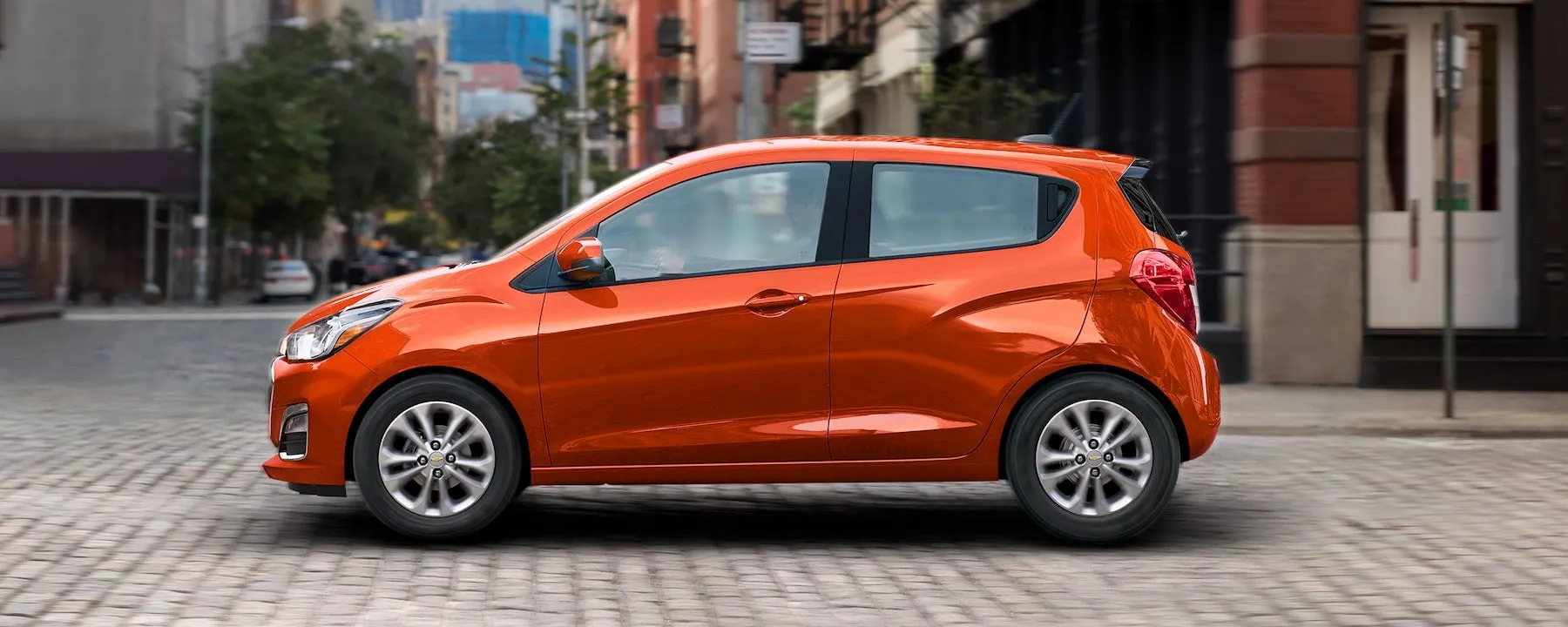
Electrical system limitations in the Spark further compromise lighting performance through voltage regulation issues that can cause headlight output to fluctuate based on engine speed and electrical load.
During idle conditions or when multiple electrical accessories are operating, the halogen headlights may receive insufficient voltage to produce their already limited maximum output. This variability in lighting performance creates unpredictable visibility conditions that can catch drivers off guard during critical moments.
The Spark’s interior lighting design also contributes to poor nighttime driving experiences through inadequate attention to preserving driver’s night vision adaptation.
The dashboard and instrument cluster illumination lacks the sophisticated dimming controls and color temperature management found in more expensive vehicles, often remaining too bright and creating reflection glare on the windshield that further impairs forward visibility.
The harsh white LED lights used for interior illumination can cause significant temporary blindness when activated during nighttime driving. The absence of modern driver assistance technologies in the Spark leaves drivers particularly vulnerable during low-light conditions when human visual capabilities are most limited.
Without collision warning systems, automatic emergency braking, or even basic parking sensors, Spark drivers must go entirely through direct visual contact with their surroundings.
This technological deficiency is compounded by the vehicle’s low seating position and limited visibility angles, which reduce the driver’s ability to detect potential hazards that might be approaching from areas not adequately illuminated by the ineffective headlight system.
4. Jeep Compass (Base Model)
The base model Jeep Compass presents a particularly disappointing example of compromised nighttime driving performance, especially considering the vehicle’s positioning as a capable SUV designed for diverse driving conditions, including off-road adventures where effective lighting becomes critically important.
The cost-cutting measures applied to the entry-level Compass trim levels result in lighting and visibility systems that significantly undermine the vehicle’s otherwise capable design and engineering.
The base Compass relies on halogen headlight technology that seems particularly inadequate given the vehicle’s intended use cases and higher seating position that should theoretically provide visibility advantages.
The 55-watt halogen bulbs produce approximately 1,200 lumens per headlight, creating an effective illumination range that rarely exceeds 140 meters even under optimal conditions.
For a vehicle marketed toward outdoor enthusiasts who might encounter wildlife, unmarked trails, or challenging terrain, this limited visibility range creates genuinely dangerous conditions that compromise the vehicle’s fundamental utility.
The headlight housing design in the base Compass reflects cost optimization that prioritizes appearance over optical performance. While the external styling maintains Jeep’s distinctive design language, the internal reflector systems create uneven light distribution patterns with significant dark zones that leave portions of the roadway and surrounding areas completely invisible.
The lack of proper beam pattern engineering results in excessive upward light scatter that reduces effective forward illumination while potentially creating glare for oncoming drivers.
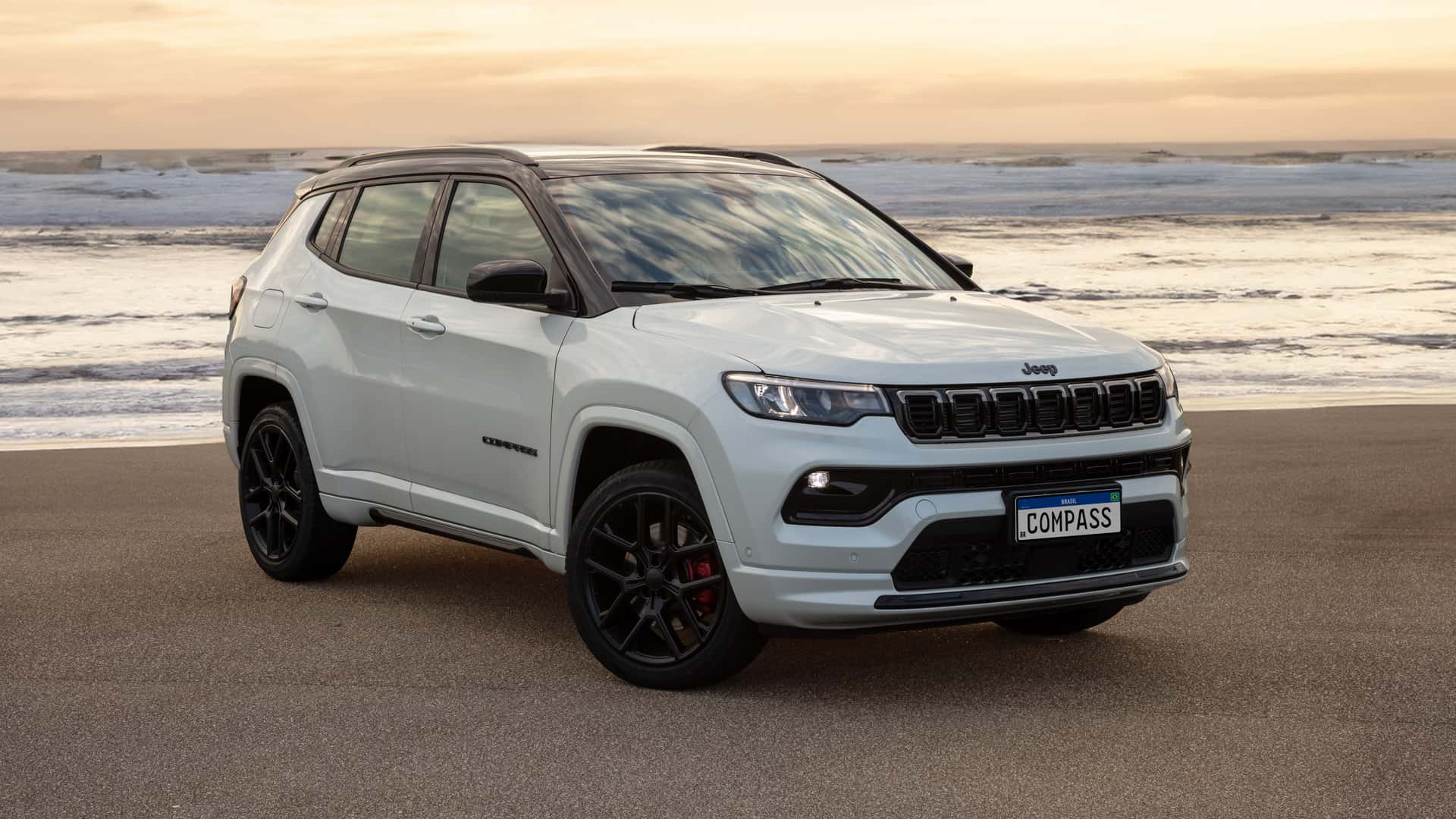
Off-road driving capabilities, a core selling point for the Compass brand, become severely compromised in low-light conditions due to the inadequate lighting system.
The narrow beam pattern and limited illumination range make it virtually impossible to safely go trails, identify obstacles, or assess terrain conditions during evening or early morning adventures.
The lack of auxiliary lighting provisions or even mounting points for aftermarket lighting upgrades forces enthusiasts to choose between safety and the vehicle’s intended recreational capabilities.
The Compass’s electrical system design also contributes to lighting performance issues through insufficient alternator capacity and voltage regulation that can cause headlight output to vary based on engine speed and accessory load.
During low-speed maneuvering or when the air conditioning, heated seats, and other electrical accessories are operating simultaneously, the halogen headlights may receive insufficient voltage to maintain their already limited maximum output. This variability creates unpredictable lighting conditions that can be particularly dangerous during technical off-road driving.
Interior ergonomics in the base Compass further compound nighttime driving challenges through dashboard and control layouts that require significant attention diversion to operate essential functions.
The instrument cluster lighting lacks the adjustability needed to maintain optimal visibility without compromising night vision adaptation, while the location and design of critical controls make them difficult to locate and operate without taking eyes off the road.
These design compromises create additional safety hazards during nighttime driving when maintaining constant visual contact with the road surface and surrounding environment becomes critically important for safe vehicle operation.
5. Hyundai Accent
The Hyundai Accent, despite benefiting from the Korean manufacturer’s generally strong reputation for value and reliability, unfortunately demonstrates significant deficiencies in nighttime driving performance that compromise both safety and driving confidence.
As Hyundai’s entry-level sedan offering, the Accent’s lighting systems reflect the challenging compromises that manufacturers face when attempting to deliver affordable transportation while maintaining acceptable safety standards.
The Accent’s halogen headlight system produces some of the most limited illumination found in contemporary vehicles, with an effective range that struggles to exceed 120 meters even with high beams activated.
The 55-watt halogen bulbs generate approximately 900 lumens per headlight, significantly less than the 2,000+ lumens produced by even basic LED systems available in vehicles within the same price range from competing manufacturers.
This limited light output creates genuinely hazardous conditions during highway driving, where typical speeds require much greater visibility distances for safe stopping and maneuvering.
The optical design of the Accent’s headlight housings compounds the illumination problems through poor beam pattern engineering that prioritizes cost reduction over performance optimization.
The simple reflector-based system creates a light distribution characterized by significant hotspots and dead zones, producing intense glare in some areas while leaving critical portions of the roadway completely dark.
The sharp cutoff between illuminated and dark areas creates a tunnel vision effect that reduces peripheral awareness and makes it difficult to detect pedestrians, cyclists, or animals approaching from the roadside.
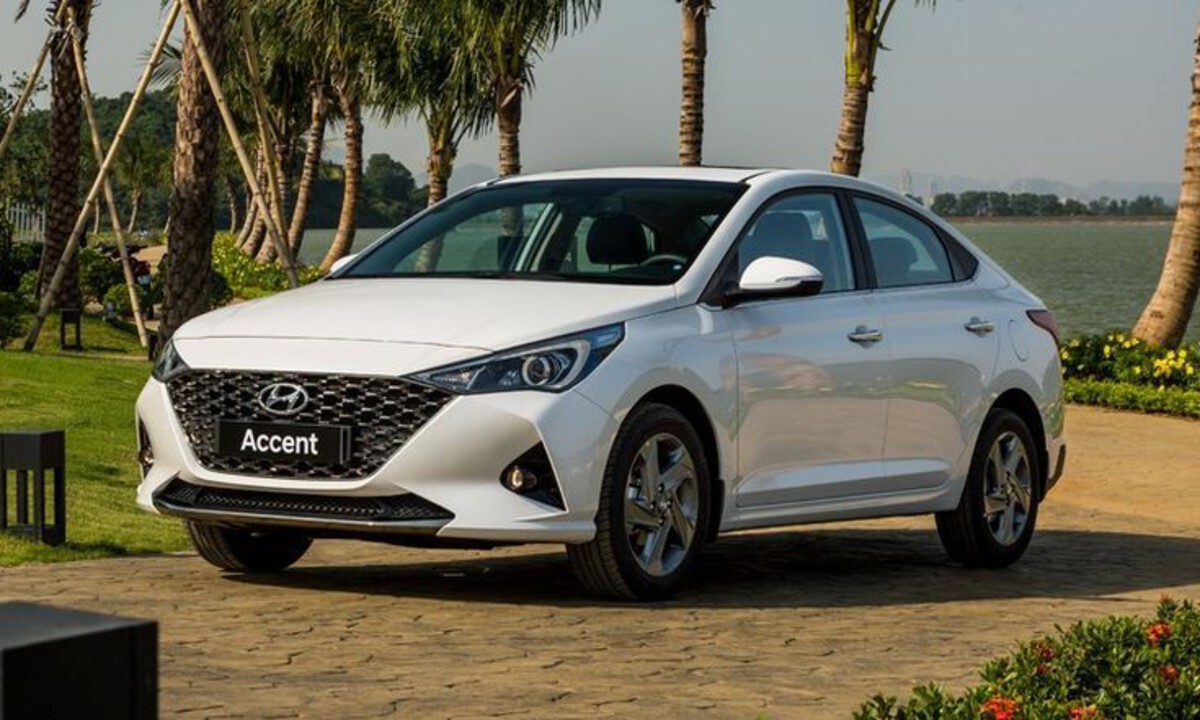
Electrical system limitations in the Accent further degrade lighting performance through inadequate voltage regulation that causes headlight output to fluctuate based on engine load and accessory usage.
During idle conditions, such as when stopped at traffic lights or in heavy traffic, the halogen headlights may receive insufficient voltage to produce their already marginal maximum output.
This variability in lighting performance creates unpredictable visibility conditions that can catch drivers unprepared during critical moments when consistent illumination becomes essential for safety.
Interior lighting design in the Accent also contributes to poor nighttime driving experiences through inadequate attention to preserving the driver’s night vision capabilities.
The dashboard and instrument cluster illumination systems lack the sophisticated dimming controls and color temperature management that have become standard in more expensive vehicles, often remaining excessively bright and creating windshield glare that further impairs forward visibility.
The harsh LED lights used for map reading and cabin illumination can cause temporary blindness when activated during nighttime driving, requiring several minutes for vision to readjust to darkness.
The complete absence of any electronic driver assistance systems in the Accent leaves drivers particularly vulnerable during low-light conditions when human visual limitations become most pronounced.
Without collision warning systems, automatic emergency braking, blind spot monitoring, or even basic automatic high beam control, Accent drivers must go entirely through direct visual observation using the vehicle’s inadequate lighting system.
This technological deficiency becomes particularly concerning when considering that entry-level vehicles like the Accent are often purchased by new drivers or budget-conscious consumers who might benefit most from electronic safety assistance to compensate for limited driving experience or reduced ability to upgrade to vehicles with better safety equipment.
Also Read: 5 Vehicles With Simple Hitch Setup vs 5 With Complicated Tow Prep

